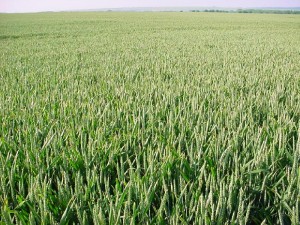 Grain futures edged higher on Wednesday. Wheat advanced amid prospects for increased demand from China, while soybeans gained as recently predicted showers in the Midwest were considered futile since the crop was already mature and in the harvest stage.
Grain futures edged higher on Wednesday. Wheat advanced amid prospects for increased demand from China, while soybeans gained as recently predicted showers in the Midwest were considered futile since the crop was already mature and in the harvest stage.
On the Chicago Board of Trade, soybeans futures for delivery in November rose by 0.29% to $13.1625 per bushel at 8:45 GMT. Prices held in range between days high and low of $13.1963 and $13.1163 a bushel respectively. The oilseed rose by 0.3% on Tuesday and erased its weekly decline following Wednesdays gains.
According to a DTN report on September 24, rainfall later this week in the west and central areas of the Midwest may cause slight delays in the early harvest and will likely not benefit the soybean and corn crops, as most of the have reached maturity.
Joyce Liu, an analyst at Phillip Futures Pte in Singapore, said for Bloomberg: “Planting delays at the start of the season resulted in the delay in development. We expect a downward revision to USDA’s estimates in the next supply-demand report. Recent rainfall in the U.S. Midwest was also unlikely to significantly improve the soybeans crop.”
The U.S. Department of Agriculture trimmed its crop estimate to 3.149 billion bushels this year on September 12, down from August’s 3.255 billion, as a result of recent unfavorable weather conditions. However that would still be 4.4% higher than last year’s drought-damaged crop.
The government agency reported on Monday that the crop condition remained unchanged last week after worsening for five consecutive weeks. As of September 22, 50% of the plants were rated good-excellent, the same as in the previous period and well above last year’s 35%. Meanwhile, 33% of the crop was categorized as “Fair” and 17% as “Very poor” and “Poor”, compared to 32% and 18% in the previous week respectively.
Elsewhere on the market, corn futures for delivery in December rose to a new session high of $4.5088 a bushel at 8:45 GMT, up 0.51% on the day. Days low was touched at $4.4838 a bushel. The grain fell by 1% on Tuesday but trimmed its weekly decline to 0.1% following Wednesdays rebound.
Corn also drew support as forecasts for rain in the west and central areas of the Corn Belt were seen with no value for the crop. The U.S. Department of Agriculture reported on Monday that the crop condition has improved last week but harvesting fell well behind last year’s pace. The government agency said that as of September 22, 16% of plants were rated very poor-poor, compared to 18% a week earlier and 51% in 2012. Meanwhile, 29% of the crop was categorized as “Fair”, the same as last week and above the previous year’s 25%. As for the premium quality, 55% of the harvest was rated good-excellent, marking a 2% improvement from the previous period and well above last year’s 24%.
As for the harvesting pace, the USDA reported that 7% of the crop was reaped as of September 22, up from 4% in the previous week but well below the five-year average pace of 16% and last year’s 37%.
Wheat gains as well
Meanwhile, wheat futures advanced amid improved demand prospects from China. Wheat for delivery in December surged 0.45% to $6.6138 a bushel at 8:45 GMT. Prices held in range between days high and low of $6.6213 and $6.5788 a bushel respectively. The grain rose by 0.5% on Tuesday and extended its weekly advance to 2.4% on Wednesday.
Wheat drew support as China, the worlds biggest consumer, may increase imports to reduce local prices and boost stockpiles. Smaller domestic output this year and higher demand led to a 3.4% jump in prices in September, data by China National Grain & Oils Information Center showed.
Shi Wei, a Shanghai JC analyst, said for Bloomberg: “China’s wheat is more expensive, so there is always strong motivation to import. Only the government can decide whether to sell domestic stockpiles to curb prices and when to buy imports.”
Meanwhile, DTN reported yesterday that a drier trend across the Southern Plains this week will favor field work, including summer crop harvest and winter wheat planting. The cold front later this week might bring much needed rains to the east and south wheat belt, the agency said.
The USDA reported on Monday that as of September 22, 23% of the winter wheat crop was planted, the same like the comparable week a year earlier and 1% below the five-year average pace. Meanwhile, 93% of the spring wheat crop was harvested last week, the same as the five-year average but below last year’s full completion.





